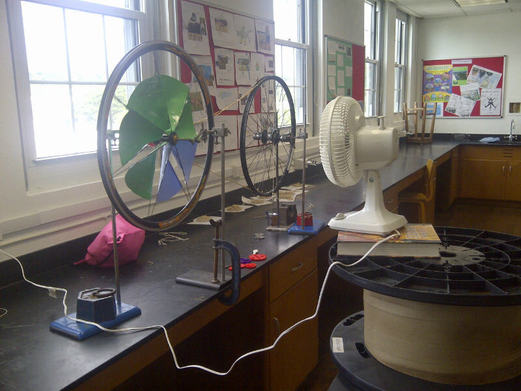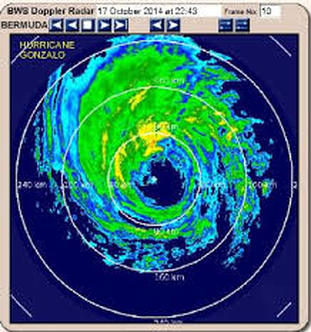Hurricane Irma from space (September 2017)
|
Home >> AP Physics I >> Rotational Mechanics
|
Torque >>
|
This is a new topic for AP Physics 1. March 2014 was the first run through of it and we had to cobble up new experiments from whatever bits and bobs that we had laying around. We were grateful to CycleWorks for a donation of several old bike wheels! The AP examiners are feeling more confident about setting free response questions on this topic, consider yourself warned!
|
Bermuda Science Olympics 2014 - the task was to construct a machine that could raise a 1 kg mass off the floor to a height of 1 m, only using a rather feeble desk fan! We used the concept of varying torques due to the changing radius of a bike wheel (i.e. gearing and a rubber band drivetrain) to achieve the goal. Needless to say - we won!
Students then went on to use the apparatus to measure the torques, angular velocities and the different tangential velocities at the different radii. |
|
Hurricane Gonzalo - 17 October 2014. A hurricane is an extreme example of rotational mechanics. Last year the island suffered a direct hit. The eye lasted over an hour and the air was eerily still, with only the sound of tree frogs gleeping away. The worst part of the storm was the returning eye wall that brought the winds out of the west. The difference between the linear speed of the advancing storm and the tangential speed of the eye wall is enormous. The radar dome is situated to the east of the island near the airport and on the images is located at the cross-hairs in the centre.
Note: Hurricanes are not rigid bodies, but fluids, so they do not follow the equations and principles that we will be learning in this topic! |
- 12 - 17% exam weighting for Multiple Choice questions
- 10 - 16 lessons

